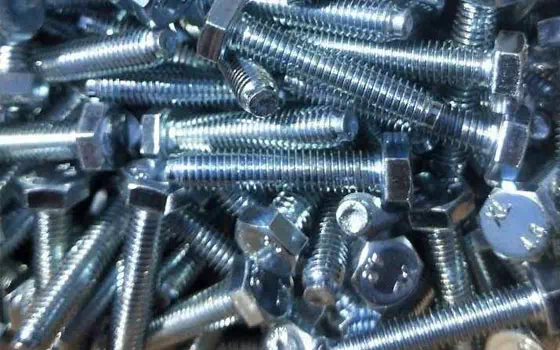Welcome to Zhishang Steel Co., Ltd.
TEL: (Gavin) +86-15665898999 | Email : info@zhishangsteel.com

Hot dip galvanizing is usually referred to as hot dip galvanizing.
Hot dip galvanizing is the process and method of putting pre-treated steel parts into molten zinc solution to form zinc and (or) zinc-iron alloy coating on its surface, so as to obtain metal coating.
Hot-dip galvanized has a wide range of applications, such as hot-dip galvanized highway traffic guardrail (high-speed corrugated beam steel guardrail connection fasteners), hot-dip galvanized fasteners and other widely used in pipeline fasteners and power transmission fasteners.
The service life of hot dip galvanizing is not only related to the process itself, but also has a direct relationship with the adhesion of the galvanizing layer.
Hot dip galvanizing layer has good covering and protection ability, and its resistance to atmospheric corrosion is better than that of electric galvanizing.
Powder galvanizing is a surface treatment process in which zinc impregnating agent is used as zinc source, zinc is produced by heating, and iron atoms are diffused with each other to form zinc impregnating layer (zinc-iron alloy layer) on the surface of steel.
The main component of powder zincizing is pure zinc powder, adding appropriate amount of alumina, fireclay, ammonium chloride and other filling materials.
The most prominent feature of powder zincizing is not an outer coating, but the organic combination of the base material and the zincizing layer, so the combination is very strong. The hardness and corrosion resistance of powder galvanized layer are much better than that of electric galvanized layer.
The powder zinc process is to bury the surface treated workpiece in a sealed container containing powder zinc agent, heat it to below the melting point of zinc, hold it for a certain time, and then cool it to room temperature with a furnace.
The most prominent feature of powder zincizing is that the infiltration layer is uniform, no ammonia embrittlement, and almost no deformation. Not suitable for nuts, bolts and other fasteners, hardware products, complex shape of the workpiece, powder metallurgy products surface anti-corrosion treatment.
Mechanical galvanizing is in the presence of zinc powder, dispersant, accelerator, liquid medium (usually water) and other substances, the use of an impact medium (such as glass balls) impact and impact on the surface of steel parts, and the surface treatment process of forming a galvanized layer on the surface of the parts.
Mechanical galvanizing layer is a kind of anti-corrosion coating formed by a completely different process from electric galvanizing and hot dip galvanizing.
Process characteristics: In normal temperature production operation, through the rotation of the loading parts of the plated drum, the impact medium in the cylinder will collide with the parts with the rotation of the drum to produce mechanical impact. Zinc powder will collide and deposit on the surface of the workpiece to form A coating with the basic physical characteristics of metal zinc.
Process characteristics: The galvanizing process of mechanical galvanizing will not cause hydrogen embrittlement harm to high-strength steel.
Process defect: uneven thickness of zinc layer. Zinc is not as smooth and shiny as electroplating.
4. Galvanized.
Electrogalvanizing is the most commonly used surface treatment method and technology in the manufacture of fastener products.
Electrogalvanizing layer is a typical anode coating, which is mainly used to improve the corrosion resistance of the substrate. Due to the thin coating thickness, it is mainly used for surface anti-corrosion protection under general environmental conditions.
After chromate passivation treatment, its anticorrosion property is greatly improved. Excellent galvanizing layer can be used for neutral outdoor protection, but in harsh industrial atmosphere and coastal climate conditions, its corrosion resistance is relatively poor.
Electrogalvanizing surface treatment method and process technology, low cost, stable and reliable process, easy to use. However, hydrogen embrittlement is easy to happen, so it must be dehydrogenated in time after electrogalvanizing. In addition, the acid and alkaline resistance is poor, the anticorrosion time is short, and the ecological environment protection of the process is low.

ABOUT USOverviewThe company mainly deals in color-coated, galvanized, stainless steel pipes, stainless steel coils, stainless steel plates of various materials; hot-rolled series of rebar, medium and heavy plates, coils, I-beams, angle steels, channel steels, H-beams and other steel products and deep processing Service. (The company’s annual invent···